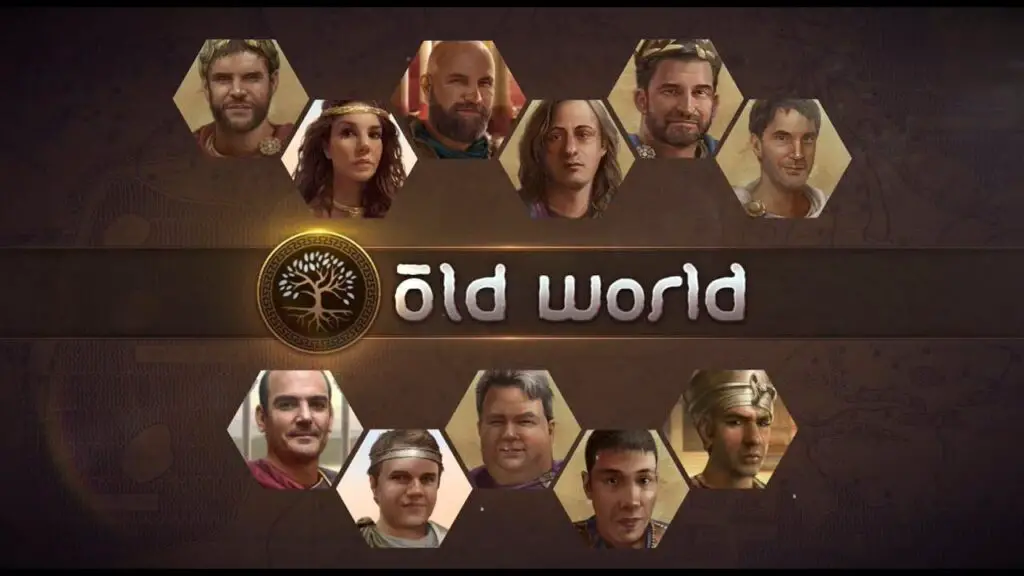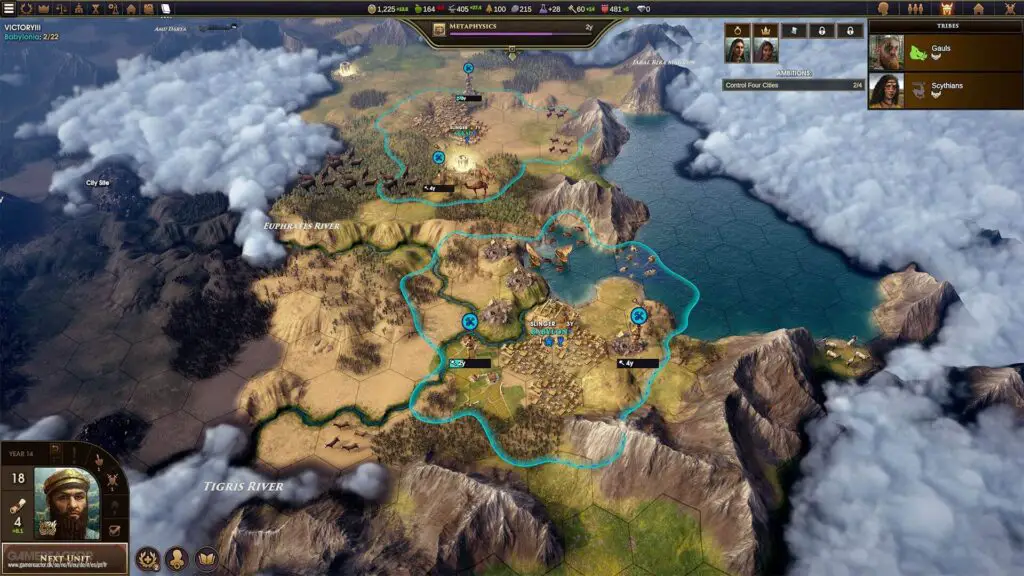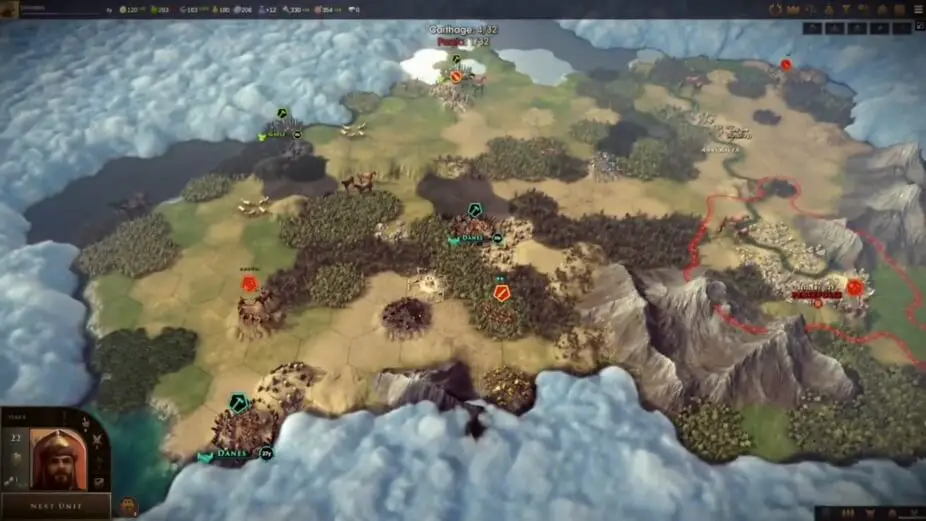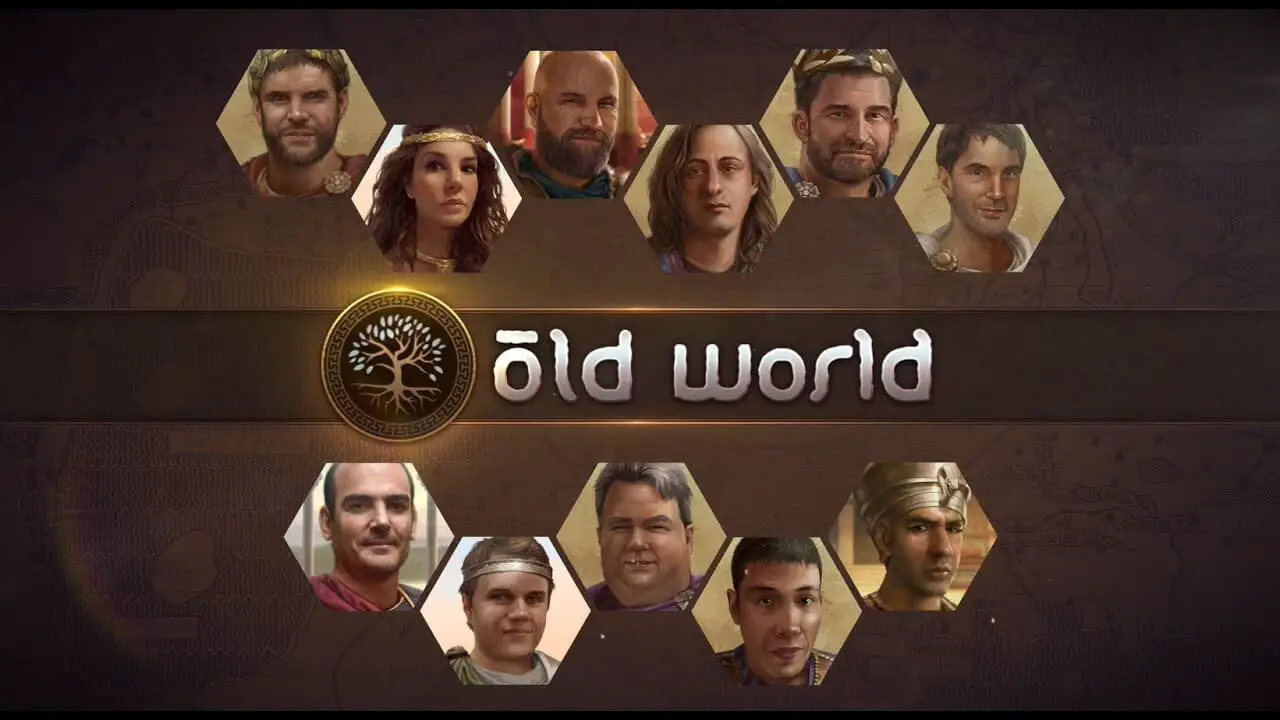Civilization meets Crusader Kings: that’s the elevator pitch for new 4X strategy “Old World”. The new game from indie producers Mohawk Games recently released exclusively to Epic Games Store. Lead by Soren Johnson whose credits include Civilisation 3 and 4 and Offworld Trading Company, Mohawk have been working on Old World for a long time and have released a game that attempts to approach the 4X genre with new ideas gleaned from their experience designing and playing other games in the packed genre.

Old World is set in the ancient era that currently features seven playable civs at launch, ranging from the always present Romans, Persians, and Greeks to the less often seen Carthaginians. Each civ is far more than just a reskin of the others too, with different units, buildings, and a central dynasty (more on that later). You’ll compete with other major civs, run by the AI and also against the weaker tribes, who kind of fill the role of the city-states in Civ but are more like “weaker” AI civs you can battle with as you look to expand.
So far, so similar. In many ways, you’ll see all the familiar sights of the Civ 4X genre with tiles, cities, units and settlers. You’ll move your settlers to new locations to start new cities, develop the land around your cities with workers and have one unit per space elsewhere, fighting battles in turn-based clashes with other civs, tribes and even roaming barbarians.
But here come the twists, because there are plenty! First of all, you can’t just send a settler anywhere to set up a new city, there are pre-marked locations on the map where you can start a new city. Whilst this can feel a bit restrictive at first, it’ll save you from having to figure out if your new city-site gives you enough space to set up without encroaching on another one. Further to this, building a new settler won’t cost you a point of population, which is kind of nice!
Another twist, perhaps one of the biggest ones, is the new resource known as orders. Moving units, sending diplomatic messages, and training military units all cost you orders. You can also spend multiple orders on the same unit, moving them multiple times. Units have a maximum number of moves they can make before they become fatigued but you can spend another resource to either force march on unit or launch “an offensive” to activate a bunch of units at once. The use of these orders gives you a hard limit on the number of actions you can take per turn and also reduces the amount of analysis paralysis.
The biggest twist is part of the game’s new change in scale. Rather than see your civilization through from the bronze age to the space age you’ll be staying more or less in the ancient world, working your way up a much smaller tech tree and the game is more granular, though never quite to the point where things are too picky or finicky. The game has some micro-management required but perhaps less than other games.
You’ll also have to manage a number of resources, ranging from gold to orders to iron and stone. The game also has a really nice mechanic that saves a lot of fiddly actions by allowing you to buy new resources at will with a simple click of a button or by holding down control whilst hovering over a unit or a structure you can’t build, because you don’t have enough stone, to automatically add buying the stone to the bill. This is a really nice time-saver!

Rather than playing across turns that are five to twenty-five years long, each turn is just one year. And rather than playing as the whole civ from the disembodied point of view of some controlling deity, you’re playing as the head of your Kingdom a King or Queen and your character will get older each year, going from young idealistic Prince to weary, silver-haired King, grimly clinging onto power and eyeing with concern their feckless heir.
You’ll make decisions from a huge pool of dynamic events for members of your family, such as how to educate your heir, raising a stray dog, dealing with a rival king’s snub at a feast or encountering an ancient ruin. These events can sometimes have a major effect on your dynasty and your kingdom but often will just add a dash of colour to the characters. In my playthrough, my second son Hephastian proved to be a superb ally and diplomat to my eldest son, Alexander, when he took the throne. But it can just as easily go the other way and a rival noble will work behind your back to bring you down and usurp your throne!
Each character in the game, ranging from members of your family to random courtiers and members of the other three noble families that you’ll place as founders of cities in your kingdom, can play a major role in the story. They can serve as governors of cities, play a major role at court, marry members of your family or lead armies. They can prove to be trusted allies, powerful generals or deadly rivals. The game presents the characters with static portraits which are really nicely drawn and “age” over time, though sometimes this can see your character go grey seemingly in just one turn but that’s a minor quibble.
The character decisions and interaction don’t go as deep as they do in CK but they are a really nice touch that really helps to tie you to the kingdom and your ruling dynasty. It also adds a lovely bit of flavour to the game’s events such as a battle on a hill carries an extra bit of drama when your beleaguered hoplites, down to half hit points, are being led by your heir! Moments like that can really add to the story that comes through in your game.
Old World isn’t the best-looking game you’ll ever see, with simple and fairly clear graphics though sometimes it’s not clear what building is built in a space. Sometimes the textures are a bit muddy too but the game makes up for this that it can run on even an older PC.
There have also been grumbles from some about the game’s performance and that its not properly optimized. I didn’t encounter anything like that myself but fair warning, this is something that has annoyed some other players.
The sound effects and music are fine but there’s not much to write home about. The game does, however, feature a very nicely designed UI which generally makes things easy to get hold of. It uses nesting tooltips too which are generally very helpful too and has a decent help and civilopedia too.
There are times, however, when the game can be a tiny bit opaque. It took me a while to figure out that you didn’t have to hold down right button and click on a character to interact with them when you can just click on them and their options for interaction all appear on the left-hand side of the screen. The game could also do a better job of making what is on each tile a tiny bit clearer too, the section of the UI simply lists what is on the tile in writing.
It’s also not easy to figure out at times what your characters stats are and what in game effect they will have. What impact will my character getting plus 1 discipline have?

The system of orders may not be to everyone’s taste but most of the changes on the genre that Old World begin are so fresh and so useful that you’ll often find yourself wondering why they weren’t brought into civ long ago!
Playing my first game of Old World, I was drawn deep into the narrative of my family and of my Kingdom and over the 200 turns that saw my family move from Phillip to various Alexanders (and then another Philip later on), it told a deep and exciting story, even though I was soundly beaten by the Romans. As I reached the end of the game, victory pretty much totally out of reach, I was already thinking about how I might play my next run through and who I would play as too!
Not only does Old World manage to hit the “just one more turn” and hits a “can’t wait to try this next time” spot. Whilst it’s neither exactly like Civ or CK, it offers a new suite of options for veterans of both games, as well as setting it firmly in a time zone and scale that’s fun to explore. Old World is ripe for expansions and DLCs somewhere down the line too.








Good review but one other cool feature should be mentioned: Take lats action back or even take the whole last turn back option. Specially, because of the lack of information how some things are exactly working, this is a real good addition to a 4x game (imo).
On the downside Old world isn’t the first game you should show to people, who want to test their first 4x game. A “real” small tutorial game would be nice.
Ill wait for it to come to steam, then ill more than likely get this game. Look nice, and would be a nice change from civ6